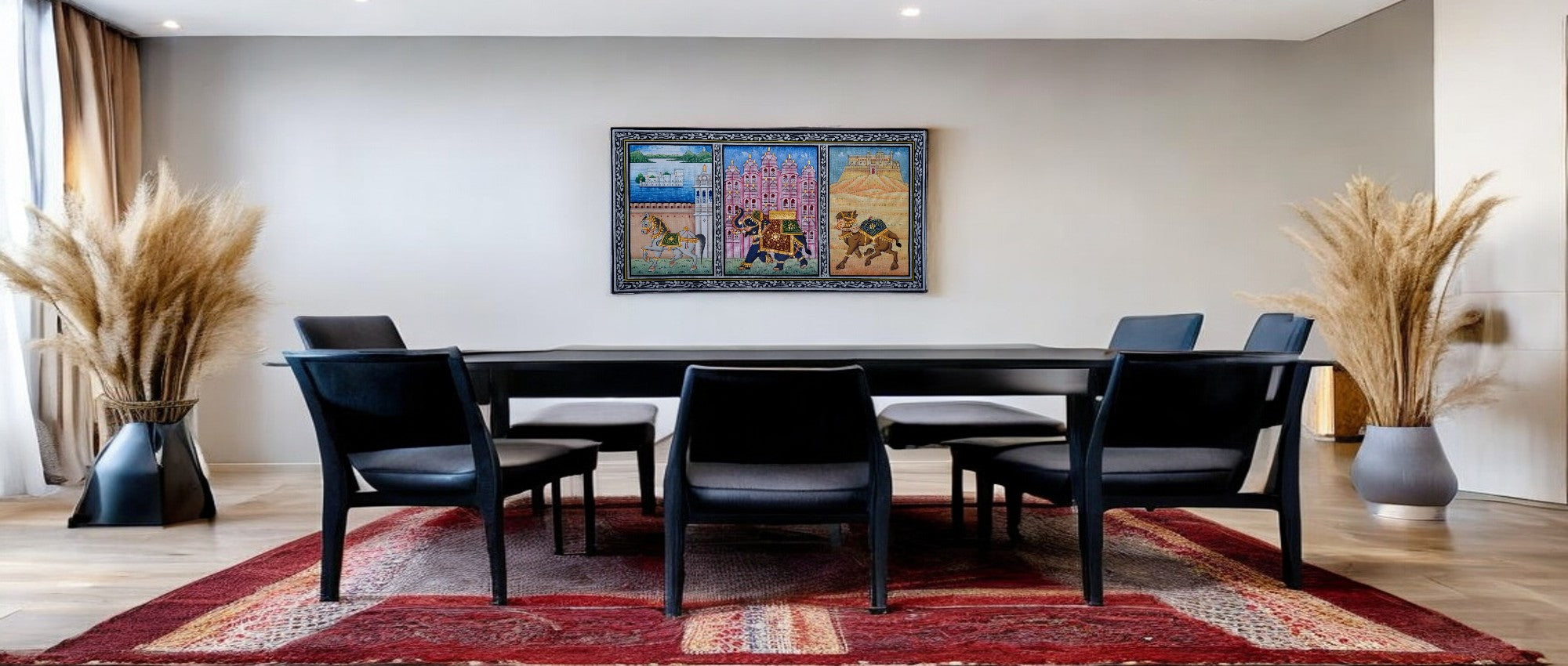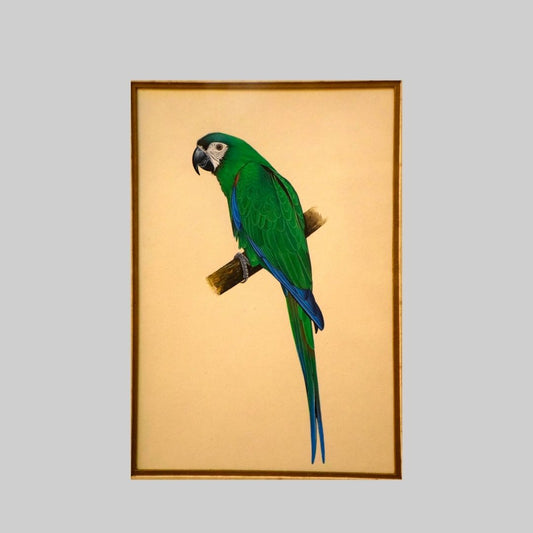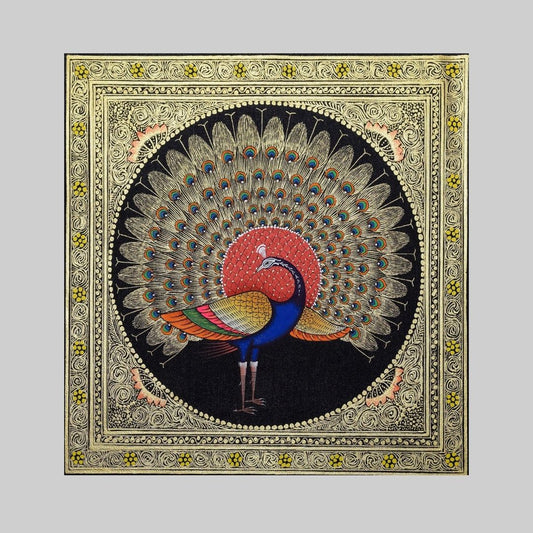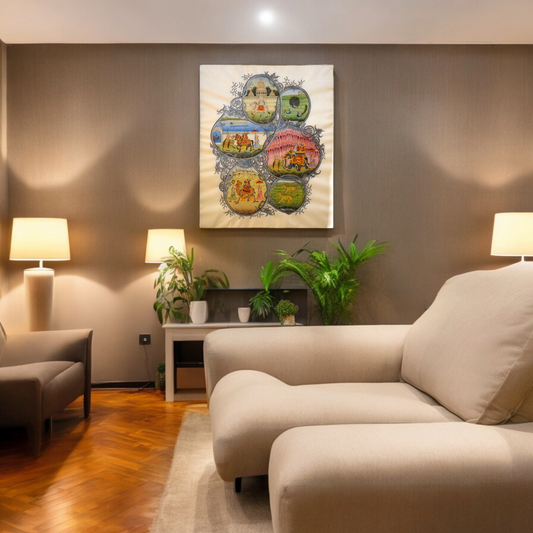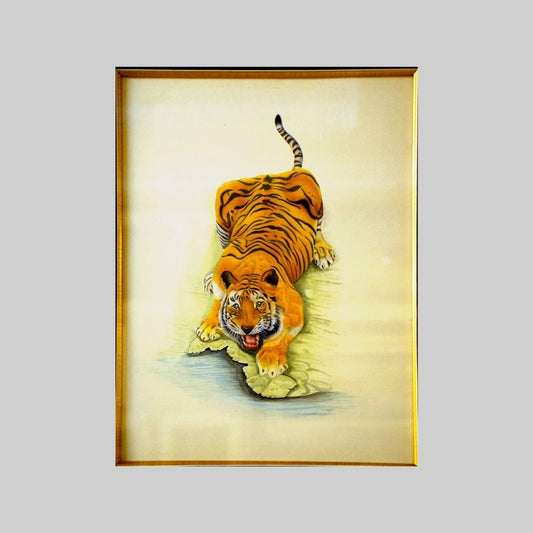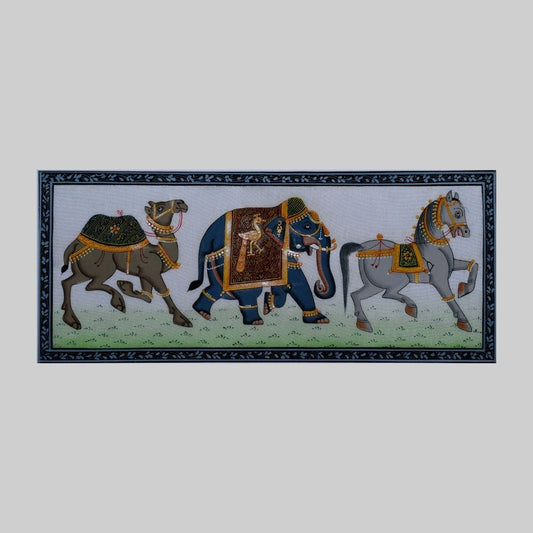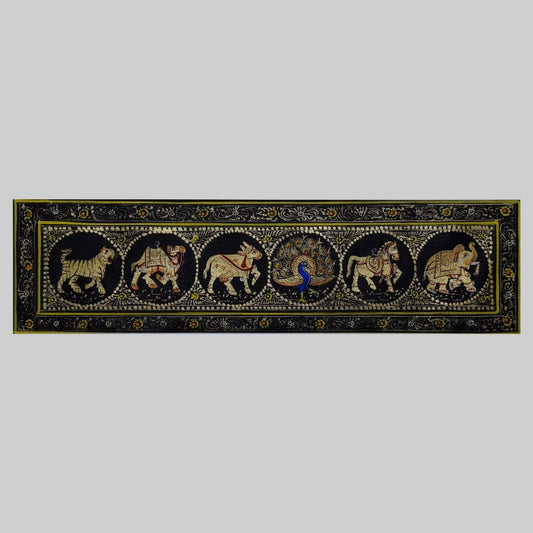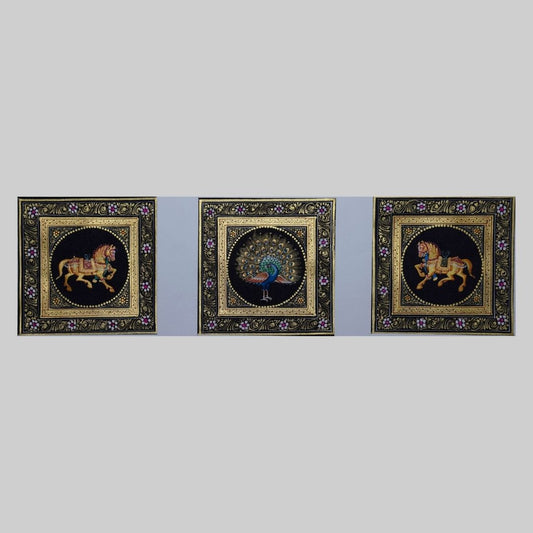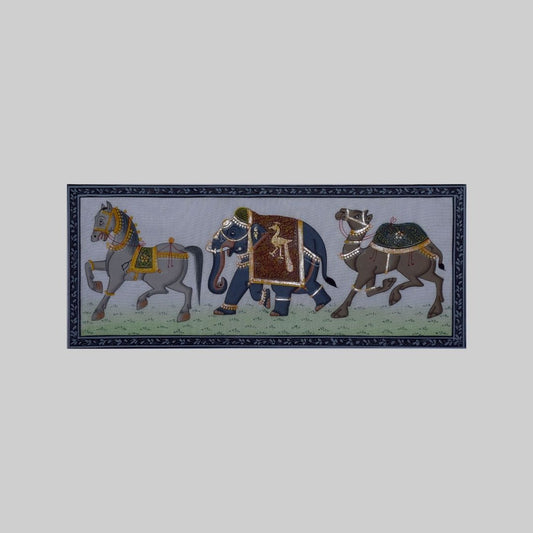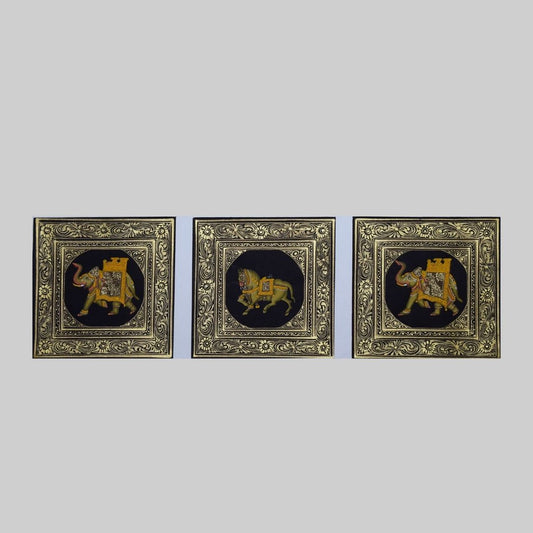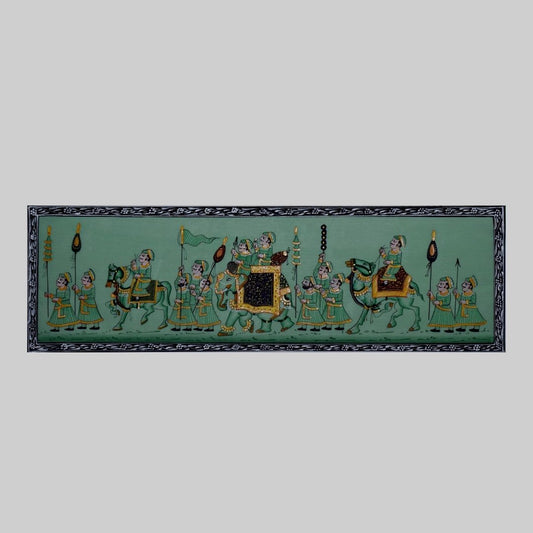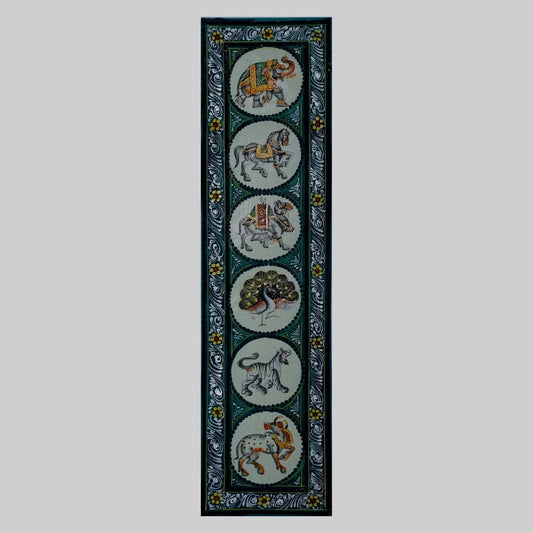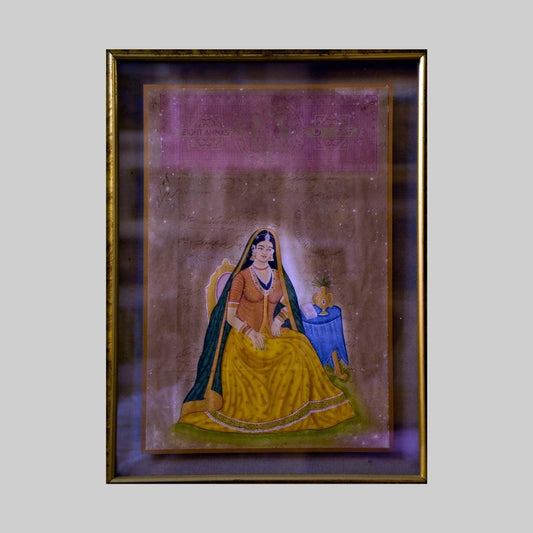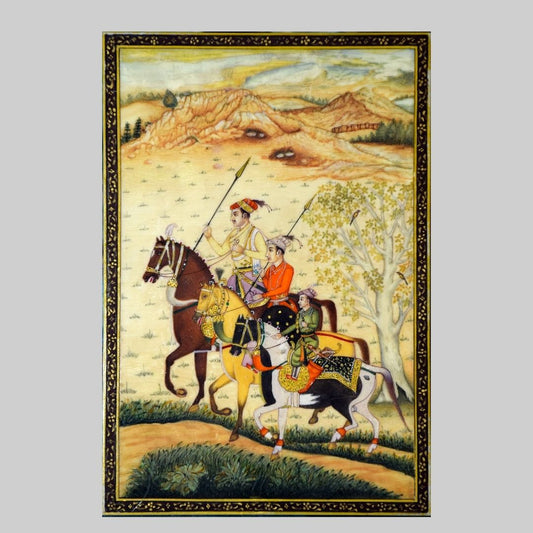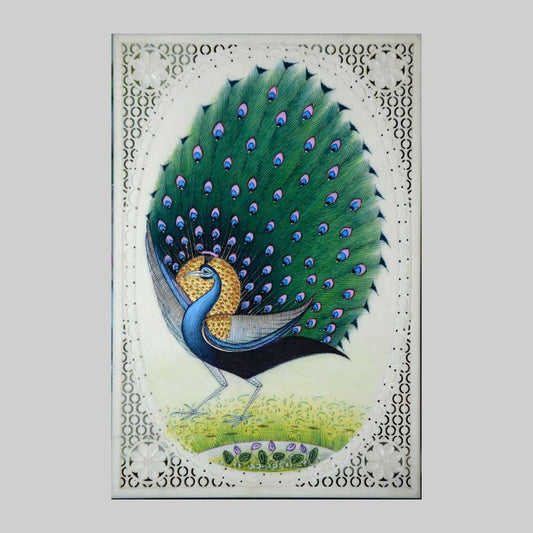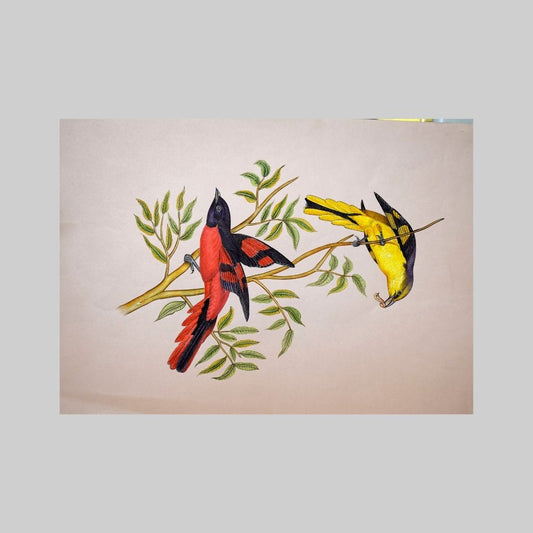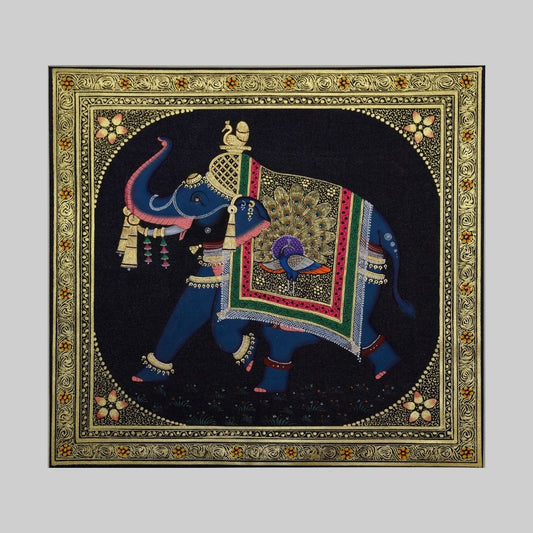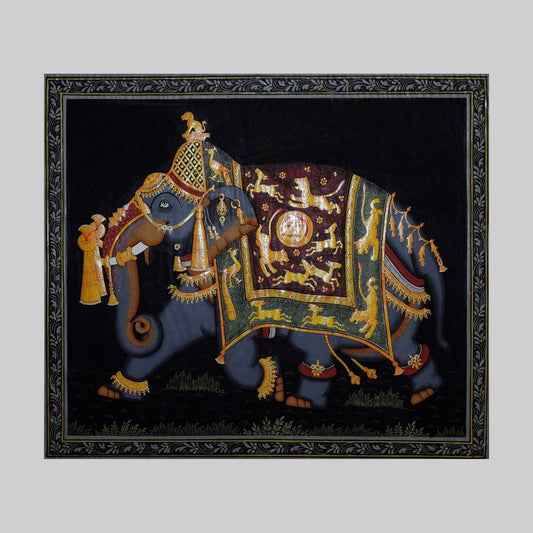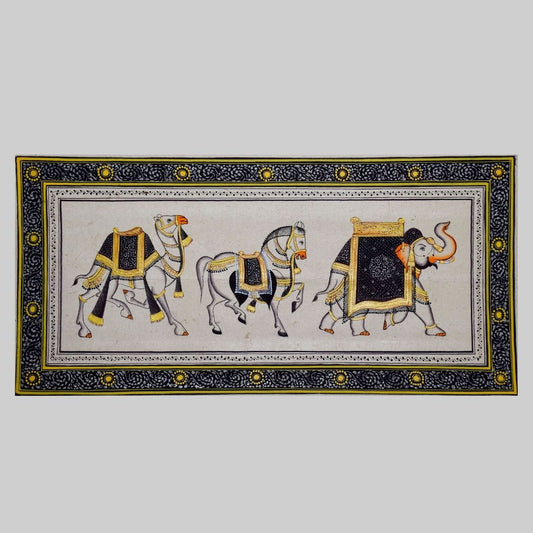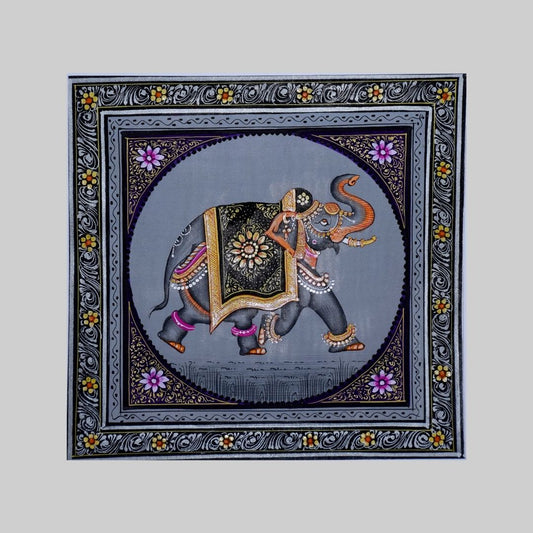-
A Calm Tiger in Miniature Painting 94
Regular price Rs. 28,000.00Regular priceUnit price per -
A Colorful Parrot in Miniature Painting 87
Regular price Rs. 13,400.00Regular priceUnit price per -
A Peacock's Glamour in Miniature Painting 1
Regular price Rs. 1,100.00Regular priceUnit price per -
Rajasthani Allure in Miniature Painting 95
Regular price Rs. 12,300.00Regular priceUnit price per -
A Tiger in Greens Miniature Painting 97
Regular price Rs. 18,000.00Regular priceUnit price per -
Handmade Royal Miniature Wall Painting of Camel , Elephant and Horse 109
Regular price Rs. 2,800.00Regular priceUnit price per -
Rajasthani Miniature Painting Of Elephant Horse Tiger Peacock Cow And Camel 108
Regular price Rs. 2,200.00Regular priceUnit price per -
Original Miniature Painting of Decorated Elephant, Camel, Horse 107
Regular price Rs. 3,400.00Regular priceUnit price per -
A Peacock's Glamour & A Swift Horse in Miniature Painting - Complete Set 106
Regular price Rs. 3,400.00Regular priceUnit price per -
Decorated Elephant, Camel And Horse Miniature Painting 100
Regular price Rs. 2,800.00Regular priceUnit price per -
Royal Horse & Elephant Duo Miniature Painting 99
Regular price Rs. 3,400.00Regular priceUnit price per -
Indian King Procession Royal Miniature Painting 98
Regular price Rs. 3,400.00Regular priceUnit price per -
India Fauna Six symbol miniature painting 96
Regular price Rs. 2,240.00Regular priceUnit price per -
The Haldi Ghati Battle Scene Finest Miniature Painting- 82
Regular price Rs. 40,300.00Regular priceUnit price per -
A Mughal Woman in Miniature Painting 81
Regular price Rs. 5,000.00Regular priceUnit price per -
Mughal Emperor on Horse Miniature Painting 68
Regular price Rs. 10,100.00Regular priceUnit price per -
A Joyful Peacock in Miniature Painting 67
Regular price Rs. 7,800.00Regular priceUnit price per -
Bird of Paradise in Miniature Painting 59
Regular price Rs. 5,600.00Regular priceUnit price per -
Peacock pair amid landscape in Mughal miniature Painting 58
Regular price Rs. 5,600.00Regular priceUnit price per -
Birds in Miniautre art Painintg 57
Regular price Rs. 5,600.00Regular priceUnit price per -
Indian Ganesha Elephant Peacock Decor Miniature Painting 52
Regular price Rs. 5,600.00Regular priceUnit price per -
Hand Painted Miniature Detailed Elephant Painting 49
Regular price Rs. 6,700.00Regular priceUnit price per -
Miniature Painting Elephant Camel Horse Left Facing 42
Regular price Rs. 2,800.00Regular priceUnit price per -
A Majestic Elephant in Miniature style Painting 32
Regular price Rs. 950.00Regular priceUnit price per
About Miniature
Gracious strokes artfully done with a single haired brush, marks the detailing in the renowned Miniature paintings.
The genesis of the Mughal miniature painting is said to be one of the pivotal points of visual history of India. An extravagant and striking fusion of the Indian style, whose roots that go back to the 6th and 7th Centuries BCE, and the Safavid style of the Persian school gave birth to the Mughal School of miniature painting. Under the patronage of Mughal emperors like Akbar and Jahangir, miniature art became the primary mode of historical archiving. The visual splendour of courtly scenes, historic wars, secret trysts of lovers, tales from mythology, and much more were captured in detail by the many schools of miniature painting throughout India.
An intricacy so fine that the painting cannot be viewed alone with naked eyes and needs magnifying glass to view the details. The vibrancy of the paintings were brought out by natural colours from indigo, precious stones, shells, pearls, real gold and silver.
Towards the end of the 18th century, Mughal miniatures started losing their sheen with the loss of genuine patrons for the delicate artform. Yet, till date the schools of miniature painting continue to pass the traditional skills on, with Rajasthan holding on strongly to the artistic legacy of the Mughal miniature paintings.

